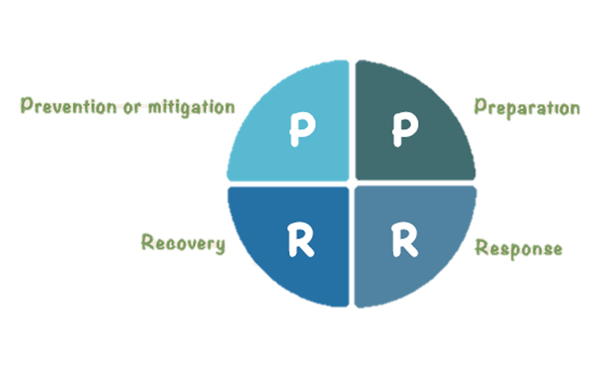For organizations providing disaster services, the aim of developing a contingency plan is to ensure optimal response to an emergency [1] to minimize the impact on service provision. A disaster contingency plan is made up of action plans abbreviated as "PPRR" as follows:

Apart from measures to reduce tangible losses, organizations can incorporate psychosocial components into their contingency plans, given how disasters may bring about psychological and social impacts to the affected population. At the international level, institutes such as World Health Organization (WHO) and Inter-Agency Standing Committee (IASC) have already developed specific guidelines on mental health and psychosocial support. They also encourage organizations to prepare their own disaster contingency plans to address related psychosocial needs [2].
In order to ensure the smooth operation and to support the psychological needs of patients and staff, some organisations such as the Hospital Authority have also formulated contingency plans for various incidents, ranging from civil disasters, radiation incidents, to the outbreaks of infectious diseases, etc.
.PNG) HA Civil Disaster Contingency Plan
HA Civil Disaster Contingency Plan
.png) HA Contingency Plan for Major Accident
HA Contingency Plan for Major Accident
at the Hong Kong International Airport
Note:
- [1] Adapted from Contingency planning, International Federation of Red Cross and Red Crescent Societies.
- [2] Adapted from Disaster triage and management manual (Hospital Authority, 2014).